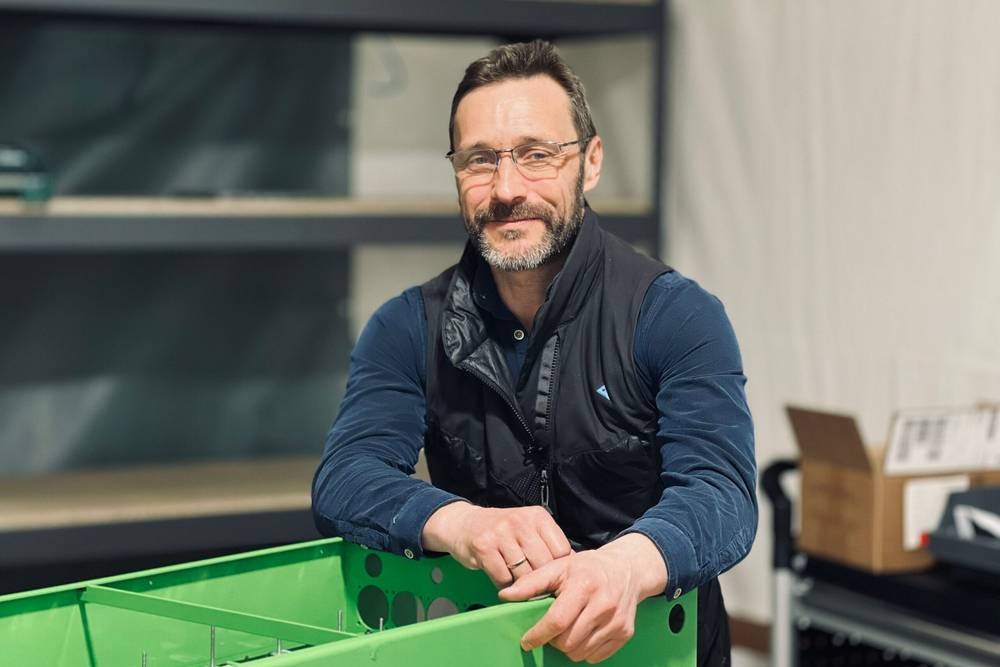
Hagal to establish battery centre in Hokksund
4/25/2022
The green shift means electrification, but the power grid isn´t dimensioned for the transition. Used EV batteries can be the solution.
11/23/2021
Weather dependent energy sources, outdated infrastructure and bottlenecks in the power grid are causing heavy fluctuations in the electricity prices and local differences in power access. Climate change creating more extreme weather, rapid electrification and high thermal costs are challenging the power grid.
– Oil, energy and coal currently make up around 80 percent of the world’s energy consumption. To reach the goal of cutting emission by at least 50 percent by 2030, 75.000 TWh energy needs to be transferred to electrical power within eight years. For the UK this corresponds to a 21 times increase in the total power consumption annually. Such a massive upgrade of the power grid capacity, in addition to increased production primarily from sun and wind, requires enormous investments and will take too long. If we are going to reach necessary climate goals, we need a new model with distributed energy production, says founder and Chief Innovation Officer in Hagal, Kent Thoresen.
Batteries give flexibility
The world does not have enough hydropower to cover the energy needed for when fossil fuels are being phased out. Renewable energy is dependent on the sun and wind, but what happens when the sun isn’t shining and the wind isn’t blowing?
– We are depending on a corresponding distributed storage capacity in the grid. Batteries bring flexibility to the grid, and allow us to store and distribute power when we need it. Locally stored power and production are key to a rapid transition to the power grid of tomorrow. Extensive use of batteries, for instance in combination with solar panels on the roof, will reduce price fluctuations and give a power surplus that can be used for power intensive measures like carbon capture, Thoresen explains.
Used batteries in the power grid
In 2018, the founders of Hagal started developing a new generation battery management system to expand the battery life cycle and give used EV batteries a second life in energy storage systems. A technology that works like an AC battery with seamless integration in the power grid.
– Batteries are highly scalable and can be tailored to different applications, in the power grid and the energy market. We enable peak shaving, removing the need to increase grid capacity. By using B cells and used batteries, investments can be directed at power production and storage. Our vision is clear. Smart batteries in the power grid will be central for electrification and the transition to a zero emission society, the Hagal founder emphasizes.
Second life batteries – a key part of the solution
According to a Greenpeace study, almost 13 million tonnes of batteries from electrical vehicles will end their journey by 2030. An enormous amount of nickel, cobalt and lithium must be handled in a sustainable manner. Production of new batteries takes a lot of power and access to more than 10 million tonnes of raw materials, which is much more than we can obtain. Second life batteries can solve this problem.
–The technological development enables recertification and reuse of batteries, and Hagal is in the driver’s seat with our Rebel technology. Reuse will be very important for the circular economy and to ensure access to the large amount of batteries that we will need for energy storage and optimization of the power grid, says Thoresen.
According to Greenpeace, used lithium batteries from electric cars that are reused for energy storage will meet the global need for this type of solution as early as 2030. The study also shows that batteries that are given a new life will cost less than half as much as new batteries.
– More people can afford to use batteries for energy storage solutions, charging stations and other critical infrastructure. This will speed up electrification and reduce the demand for new batteries. This is how we limit the environmentally damaging recovery of raw materials and emissions in connection with the production of new battery cells, says Thoresen.
You may also like
